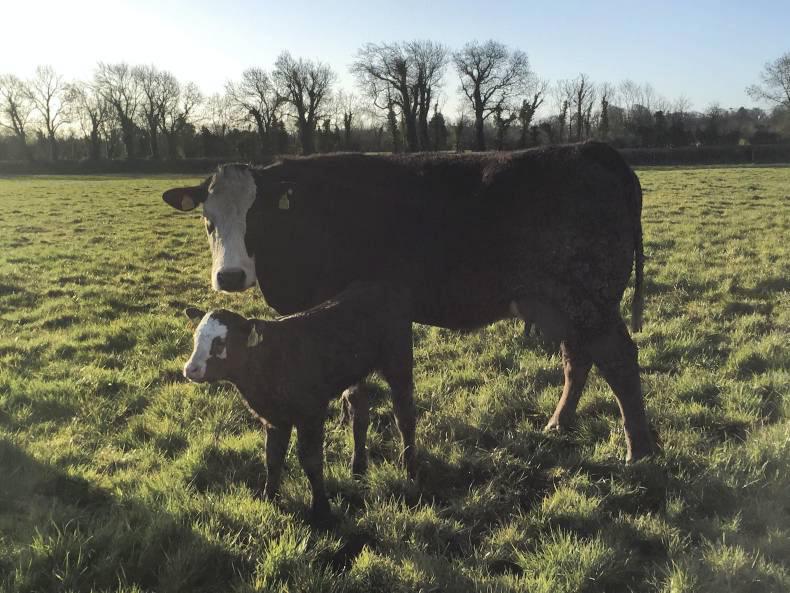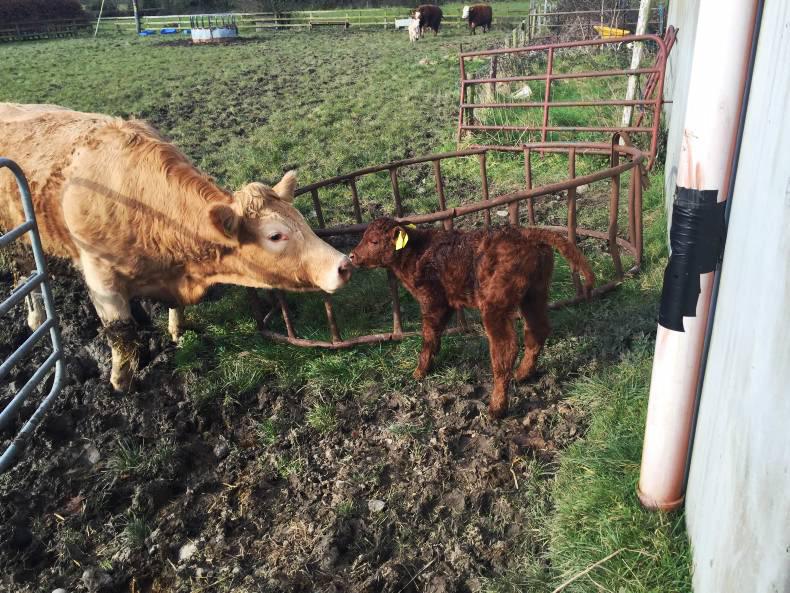It’s quiet, too quiet...
On this farm we typically assist 40% of calvings. Not necessarily because we have to, but because we can. Once things begin to slow, we intervene. It reduces stress on both man and beast.
Of course, we’re conscious that some of the sires we use aren’t known for spitting them out – hence our readiness. Our methods have no knock-on effects on the herd’s fertility performance. In fact, our cows calve every 364 days. The national average for this trait is over 400 days.
This year though, the jack is gathering dust. Save for last week’s escapades, there have been no difficult calvings.
By calving slightly later, newborns are almost straight to grass; an environment where potential health risks are much lower and feeding the cow is cheaper
We’re six calves into a season that’ll see just shy of 50 cows give birth in 12 weeks, 90% of which will drop in nine weeks.
Our timing is by design. By calving slightly later, newborns are almost straight to grass; an environment where potential health risks are much lower and feeding the cow is cheaper. Bringing all of our progeny to beef means that the heavy weanling in November is not the be-all-and-end-all, though we’re conscious that the preceding weight gain is the cheapest we’ll get in the animal’s life.
Nine-month magic trick
My records tell me that of our maiden six easy-calvers in 2016, four performed the job solo last year – no surprises. Calving 2016 has also produced a nine-month magic trick.
Take the lowest replacement index cow in the herd (€22, one-star), add a Saler (RIO) straw, pray for a girl and voila: a five-star replacement heifer. At last check, the calf’s index value will be €98 – coincidentally the threshold for a five-star animal.
What was it that McGregor said?
“Precision beats power and timing beats speed.”
Elsewhere, yearling heifers have been restricted to just over half a kilogramme of a 16% grower concentrate on top of their silage while their male counterparts are creeping the other way with a view to a mid-summer finish. These ladies will turn out a week either side of April Fool’s day, depending on ground conditions. Easing them off meal now will help with the transition to grazed grass, which can be quite hard on the animal.
Cows and calves are hitting grass within three days of birth, though the sod below them remains spongey. Thoughts this week turn to nitrogen. Silage ground will get 80 units and won’t be grazed pre-cutting. Grazing ground will get a bag of CAN as a kick-start.






 This is a subscriber-only article
This is a subscriber-only article













SHARING OPTIONS: